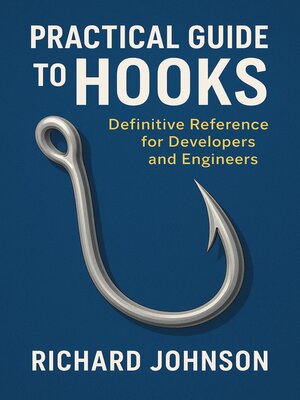Practical Guide to Hooks
ebook ∣ Definitive Reference for Developers and Engineers
By Richard Johnson

Sign up to save your library
With an OverDrive account, you can save your favorite libraries for at-a-glance information about availability. Find out more about OverDrive accounts.
Find this title in Libby, the library reading app by OverDrive.



Search for a digital library with this title
Title found at these libraries:
| Library Name | Distance |
|---|---|
| Loading... |
"Practical Guide to Hooks"
"Practical Guide to Hooks" provides a comprehensive exploration of hook mechanisms, bridging theory and practice across modern software development. Beginning with a historical and conceptual foundation, the book elucidates the evolution, design, and semantics of hooks—dynamic extension points that empower flexibility in both frontend and backend systems. Readers gain a nuanced understanding of the mechanisms, trade-offs, and challenges posed by hook-centric architectures, with comparative analyses against alternative extension paradigms like callbacks, plugins, and aspect-oriented programming.
A significant focus is dedicated to the real-world application of hooks, particularly within the React ecosystem. The guide delves deeply into React hooks, from foundational concepts like useState, useReducer, and useEffect to advanced patterns involving performance optimization, context propagation, concurrency, and server-side components. This in-depth treatment is extended to other leading frontend frameworks such as Vue, Svelte, and Angular, alongside critical discussions on interoperability, testing, and debugging strategies tailored for robust application development.
Broadening its scope, the book ventures into backend middleware, distributed systems, and systems-level design, covering hooks in web backends, event-driven architectures, operating systems, network protocols, and cloud-native technologies like Kubernetes and service meshes. Advanced implementation topics—including metaprogramming, JIT hooking, concurrency management, and security governance—are systematically addressed, culminating in best practices for building, scaling, and governing extensible ecosystems. With this authoritative guide, architects and engineers are equipped to design, implement, and manage hook-based solutions with confidence and clarity.







